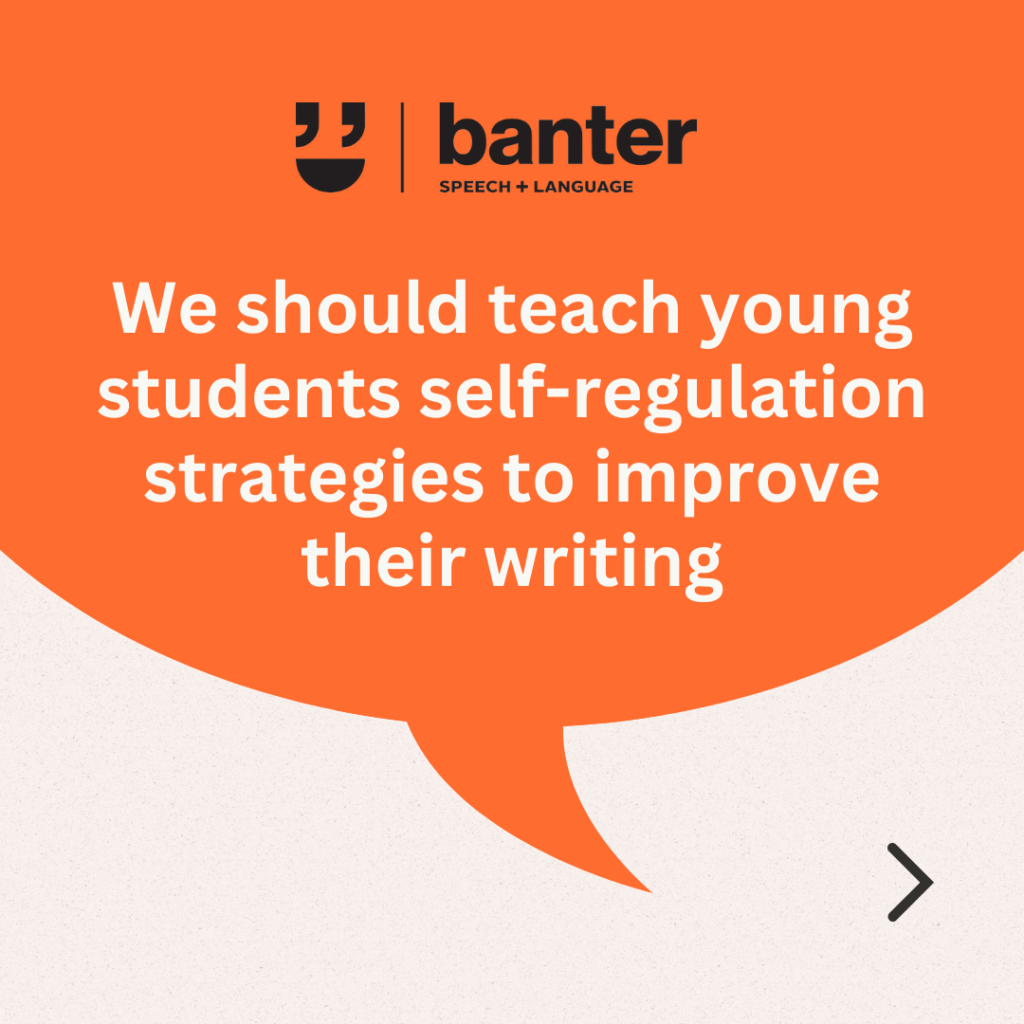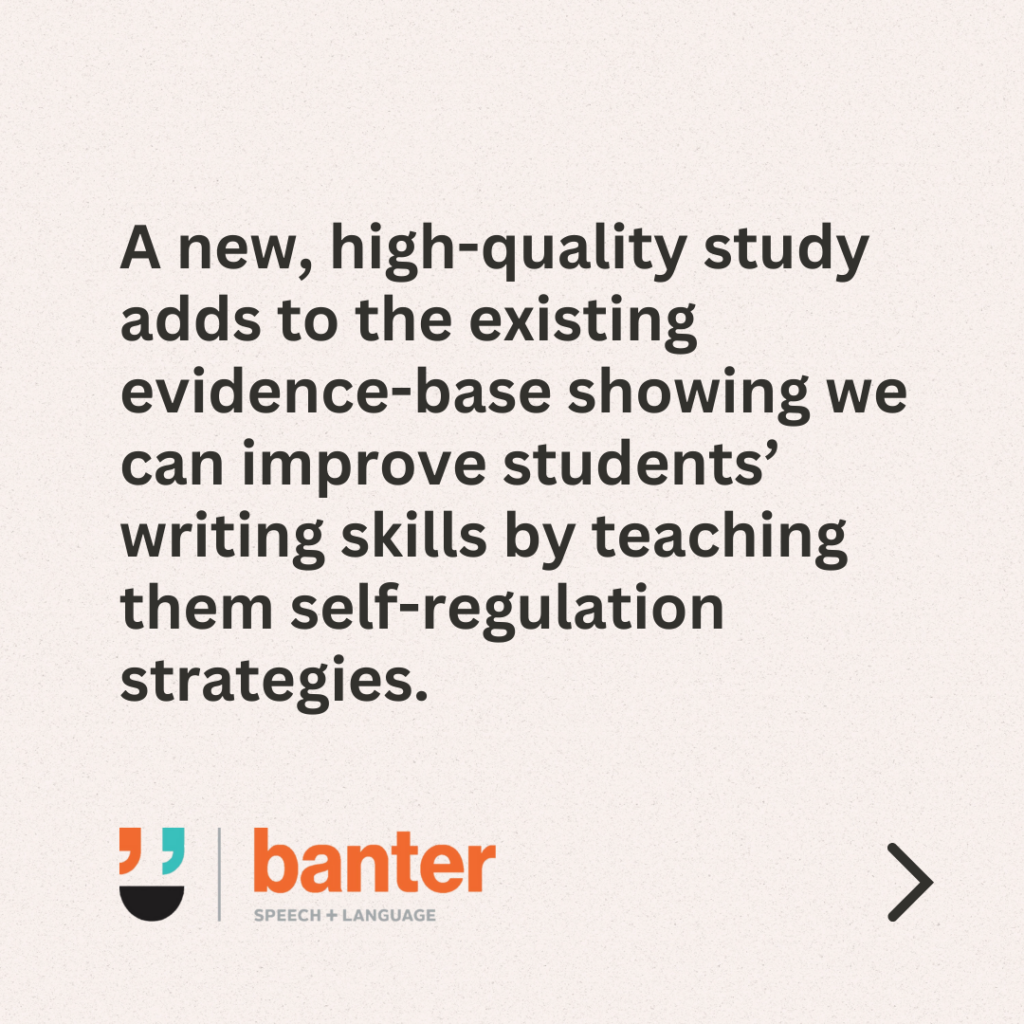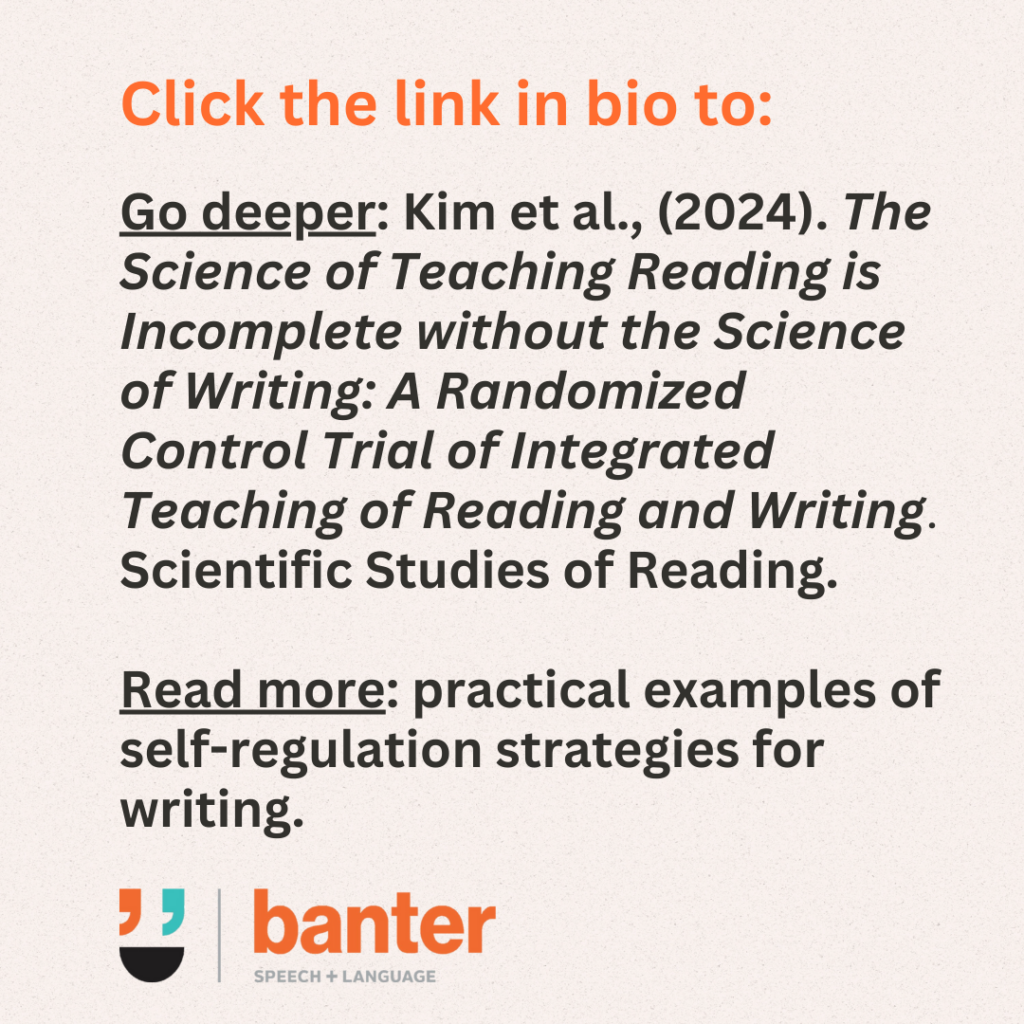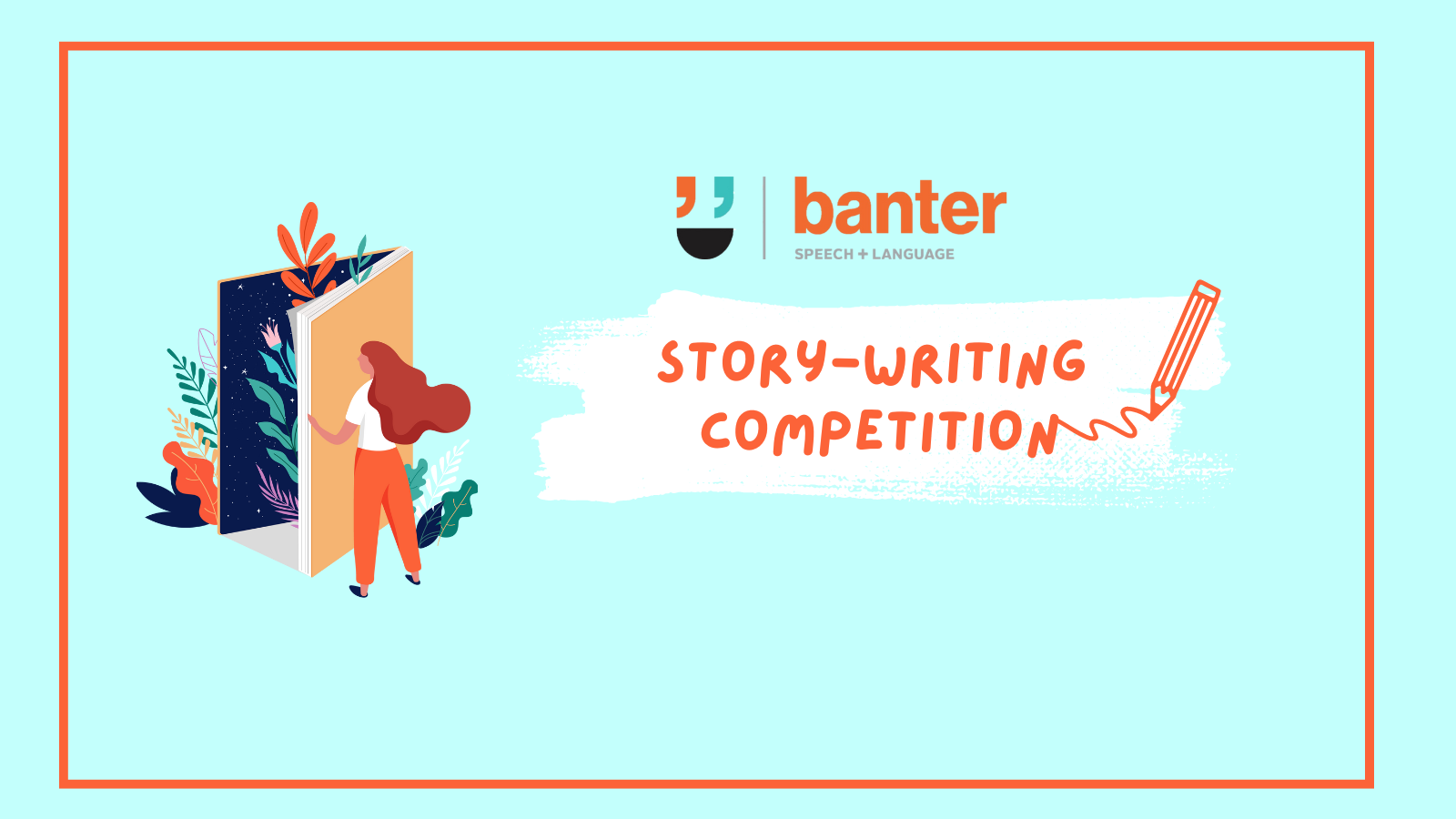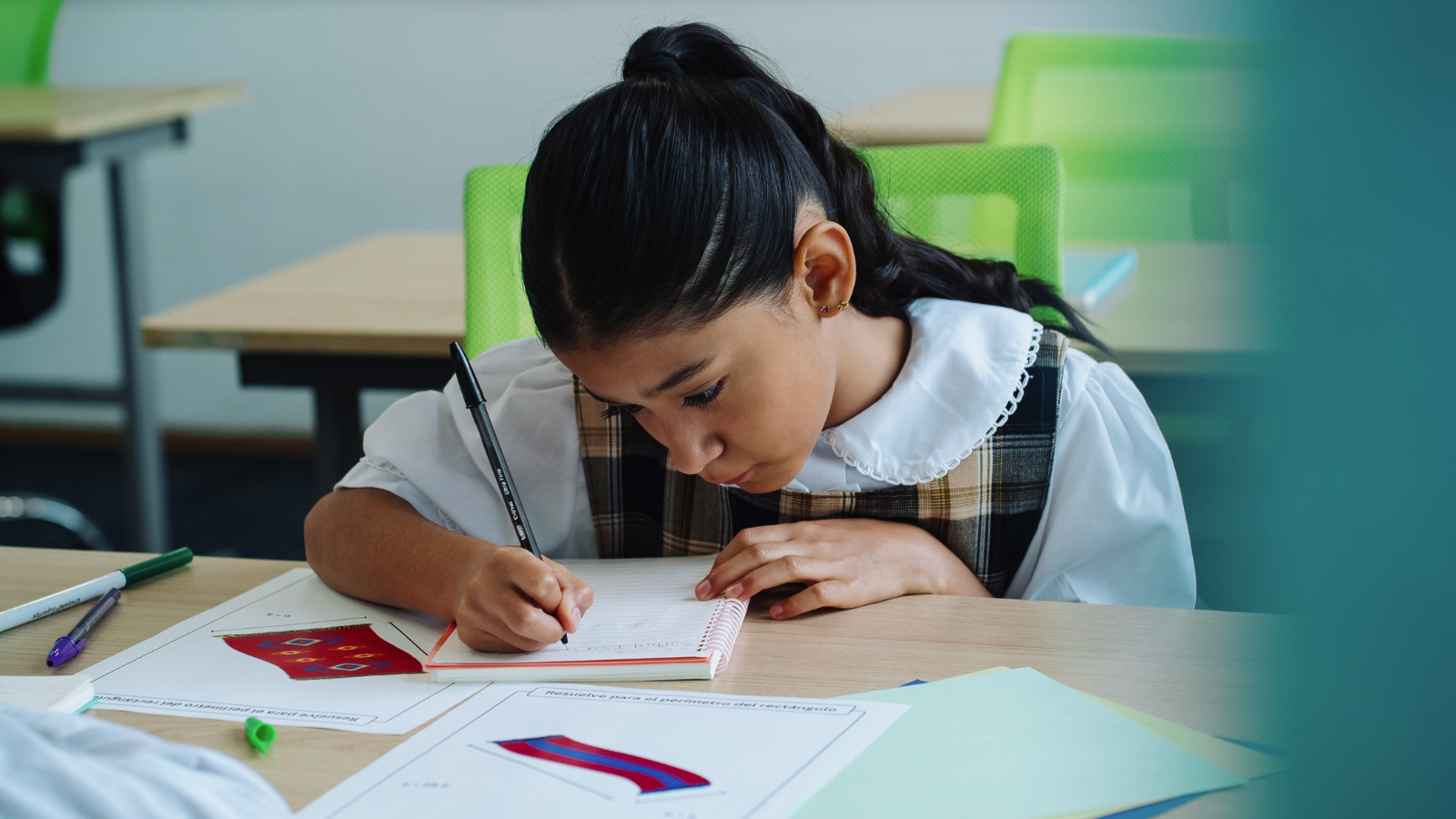We should teach young students self-regulation strategies to improve their writing
A new, high-quality study adds to the existing evidence-base showing we can improve students’ writing skills by teaching them self-regulation strategies.
Why it matters
Self-regulated writers are better at setting goals, planning, self-assessing and monitoring, maintaining attention and persistence, and using writing strategies.
Zoom in
To improve a student’s motivation, self-efficacy, and attitudes and beliefs about writing, we can explicitly teach them strategies for managing the writing process and their own behaviour, including:
- goal-setting;
- self-assessment of writing performance related to goals;
- self-instructions; and
- self-reinforcement.
Some examples of self-regulation strategies integrated into writing instruction for writing in action
- Teaching students that everyone has to learn how to write. We can get better as writers by learning the tricks, or strategies, for good writing and working hard to use these strategies (or tricks).
- Establishing a partnership: We (the adults) will work hard to teach you good writing strategies, and you agree to work hard to learn and use them.
- Explicit teaching of the purpose and structure of different texts types: e.g. good informative writing: (a) informs the reader of facts and helps them learn; (b) has an effective opening – topic sentence and hook (if appropriate); (c) includes at least three big ideas, which are facts; (d) includes facts that are important and clear; (e) uses good sentences; (f) makes sense; (g) uses linking words effectively to help the reader know a new big idea is coming; (h) uses good word choices to reach the reader; and (i) has an ending that wraps it up right.
- Use of exemplars of good writing of the text type(s) being taught.
- Mnemonics to learn structure: e.g. the important parts of books or essays written to inform the reader can be remembered with TIDE (T: Topic Sentence, tell what you are writing about; ID: big IDeas, 3 or more; E: Ending, wrap it up right).
- Graphic organisers for mnemonics on a whiteboard or chart with space for making notes on the right side.
- Word and phrase banks: e.g. giving students a short sample list of linking words, hooks/attention getters, and some ways to conclude informational texts, to which students would add their own ideas.
- Teacher modelling of good writing while self-talking about the process.
- Explicit teaching of note-taking, e.g. demonstrating “caveman talk” that saves us time as it is much faster than writing sentences, and easier to change.
- Student-evaluation of the ordering of points: which should come first, and why, numbering them on the graphic organiser.
- Teacher modelling of ‘self-statements’ (also referred to as self-talk or self-instructions), e.g.:
- that reflect determining how to get started (remembering their goal, with student help);
- when coping with difficulty, frustration, or so on;
- when checking for good, clear sentences; thinking about their reader; and recognising good work, ideas, word choice, and so on.
- Students being encouraged to help the teacher with what to say to themselves as they write.
- Students thinking and recording their own personal self-statements on the back of their folders for the categories noted above. Students being reminded to use their self-talk quietly or in their heads when working and add to their lists as needed.
- Use of cartoon rockets to self-graph strategy use: Providing students with several drawn “rockets” with blank parts (for each part of the text), flames beneath, and stars above (see below for an example). Students self-assessing their writing by graphing how they did against the mnemonic/graphic organiser. For example, students determining the number of parts of TIDE they had included, and colouring in the rocket up to that number, colouring in the flames below the rocket to “blast off their rocket” if they had all or more of the parts, and colouring in a star for each linking word and “good word” used.
- Teacher and student discussions about all that they had learned and how they were doing, noting the progress they had made.
- Using negative examples: e.g. a poor, incomplete essay, analysed using a rocket chart.
- Student self-appraisal of pre-intervention writing samples. To show students their own progress, with students determining which and how many parts of the text they had included by colouring that number of blocks in the body of the first rocket in their folder. (The teacher noting that, of course, the students did not have all of these aspects when they took the pretest as they had not started learning yet.)
- Students celebrating their progress and talking about what they were better at now and what they needed to keep working on.
- Memorising the purpose of writing texts and the key components, and gradually fading out mnemonics, graphic organisers and other scaffolds as students showed they could write good texts independently.
Note: these strategies are paraphrased from the supplemental materials from another paper from the same research group, Yes, They Can: Developing Transcription Skills and Oral Language in Tandem with SRSD Instruction on Close Reading of Science Text to Write Informative Essays At Grades 1 and 2 – any errors of interpretation are my own.
Example of a rocket chart:
Picture Source: TWA cartoon rockets used by students to track daily strategy use
Go deeper
Kim, Y. S. G., Harris, K. R., Goldstone, R., Camping, A., & Graham, S. (2024). The Science of Teaching Reading is Incomplete without the Science of Writing: A Randomized Control Trial of Integrated Teaching of Reading and Writing. Scientific Studies of Reading, 1–23. https://doi.org/10.1080/10888438.2024.2380272
Further reading
How to help a disorganised student: some practical ideas and resources
This article also appears in a recent issue of Banter Booster, our weekly round up of the best speech pathology ideas and practice tips for busy speech pathologists, speech pathology students and others.
Sign up to receive Banter Booster in your inbox each week:

Hi there, I’m David Kinnane.
Principal Speech Pathologist, Banter Speech & Language
Our talented team of certified practising speech pathologists provide unhurried, personalised and evidence-based speech pathology care to children and adults in the Inner West of Sydney and beyond, both in our clinic and via telehealth.


